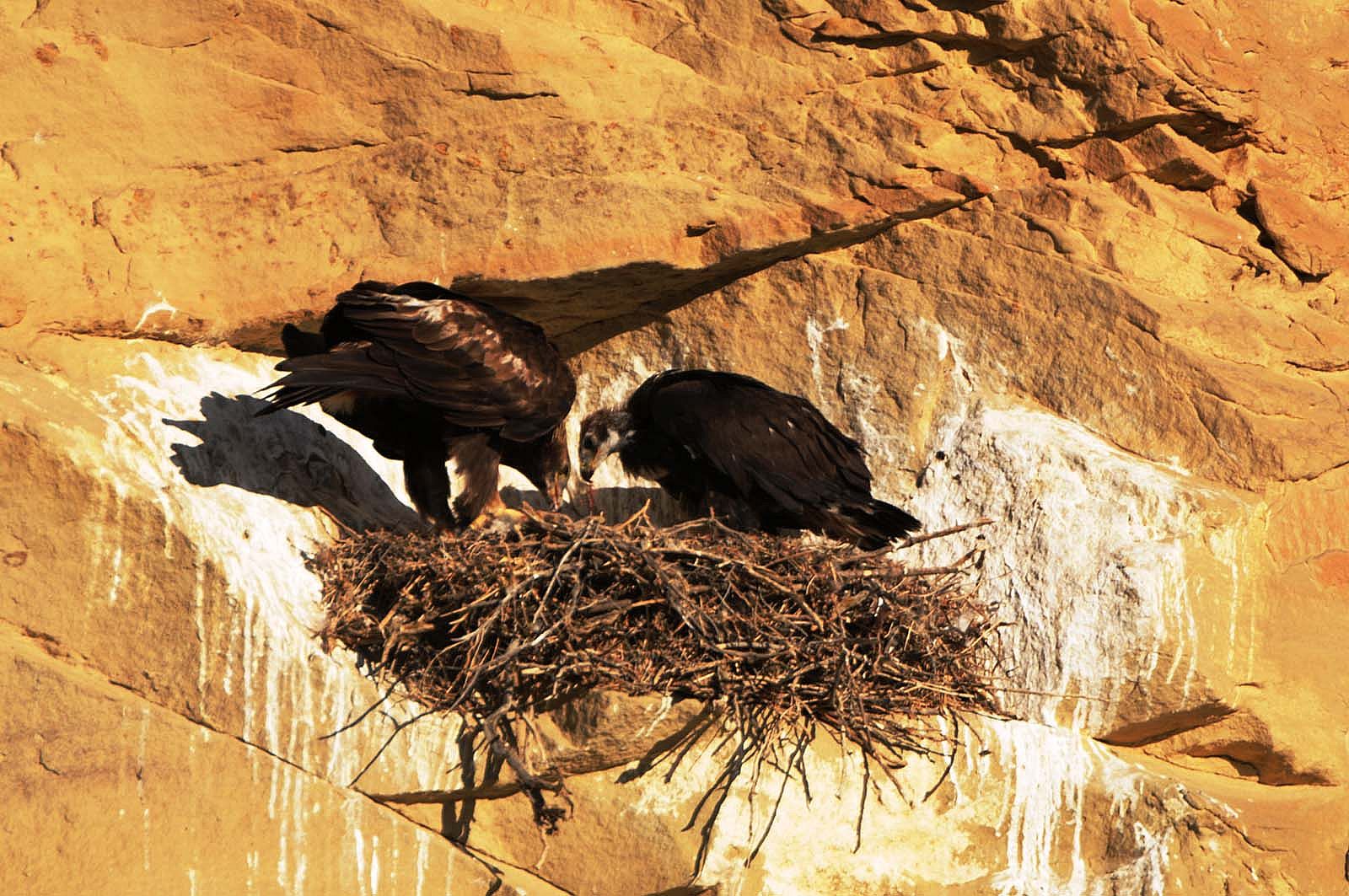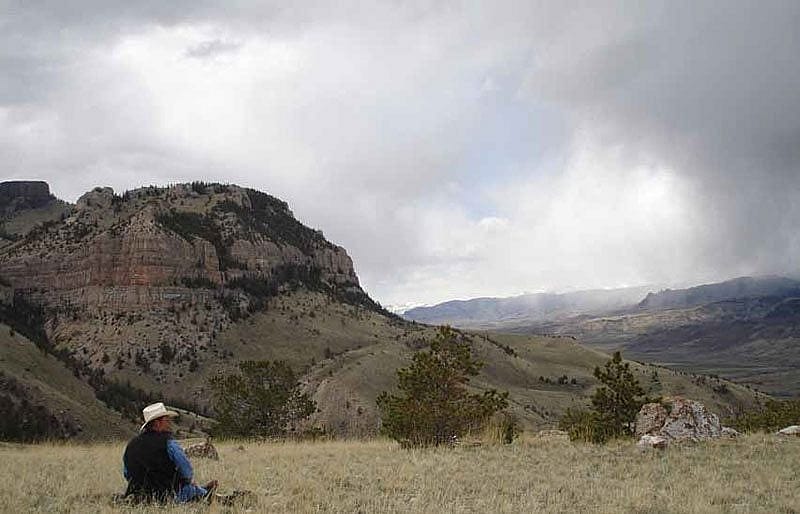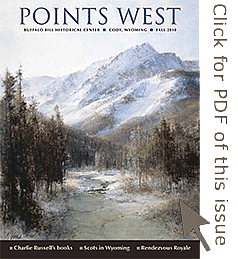
Points West Online: Listening to the Golden Eagle: Fieldwork 2010
Originally published in Points West magazine
Fall 2010
Listening to the Golden Eagle: Fieldwork 2010
By Charles R. Preston, PhD
In its second year in 2010, the Draper Natural History Museum’s Golden Eagle Program at the Buffalo Bill [Center of the West] continues to reveal new information. Here, Dr. Charles R. Preston weighed in on that year’s work.

Back to the golden eagle
It looked as though the big bird would crash headlong into the side of a big, sandstone cliff. Then, at the last second, with only a slight adjustment of her tail, she veered sharply to her left, lowered her wing“flaps,” extended her feet and huge talons, and seized the running jackrabbit. All I could see were rabbit ears and feet, and the eagle’s tail and wings as the pair of entangled animals somersaulted through a cloud of dust!
In the last two years of our study of golden eagle ecology in the eastern portion of the Greater Yellowstone region, this was only the second successful eagle-hunting episode I had witnessed from initial pursuit through to a kill. I’ve swum among white-tipped reef sharks while they caught penguins in the Galapagos Islands; held my breath while a jaguar silently passed within less than eight feet of me in a dense forest in Belize; and watched gray wolves bring down elk in Yellowstone’s Lamar Valley. But none of these top the drama of witnessing first-hand a golden eagle spot, pursue, and capture a fleet-footed, white-tailed jackrabbit in Wyoming’s amazing sagebrush-steppe landscape. You can imagine the adrenaline rush Mongolian Kazakh tribesmen must feel when they hunt livestock predators from horseback with trained golden eagles!
It’s easy to see why the golden eagle is so highly revered by cultures, past and present, across the Northern Hemisphere as a living symbol of freedom, courage, power, wisdom, and sovereignty. Many American Indian cultures view eagles as sacred messengers between heaven and earth. Among these cultures, it is a great honor and responsibility to hold or even touch an eagle feather, and this honor is bestowed only on a chosen few. Eagles are favorite subjects for artists and gun engravers, and eagle images are used to represent countless nations, corporations, and commercial products. While the American bald eagle was chosen as our United States national symbol, it is the golden eagle that dominates the skies of western North America and would be a fitting choice as a symbol for our region of the U.S. and the Spirit of the American West.
About that raptor
Beyond the icon lies a fascinating predatory bird whose reality and ecological importance in many ways surpass even the most imaginative human mind. Like all birds of prey—called raptors—the golden eagle has a very large and powerful hooked beak for tearing flesh from its prey, powerful legs and feet, and long, sharp talons. The golden eagle also has extremely keen eyesight, enabling it to spot potential prey from a very long distance—as much as a mile or more.
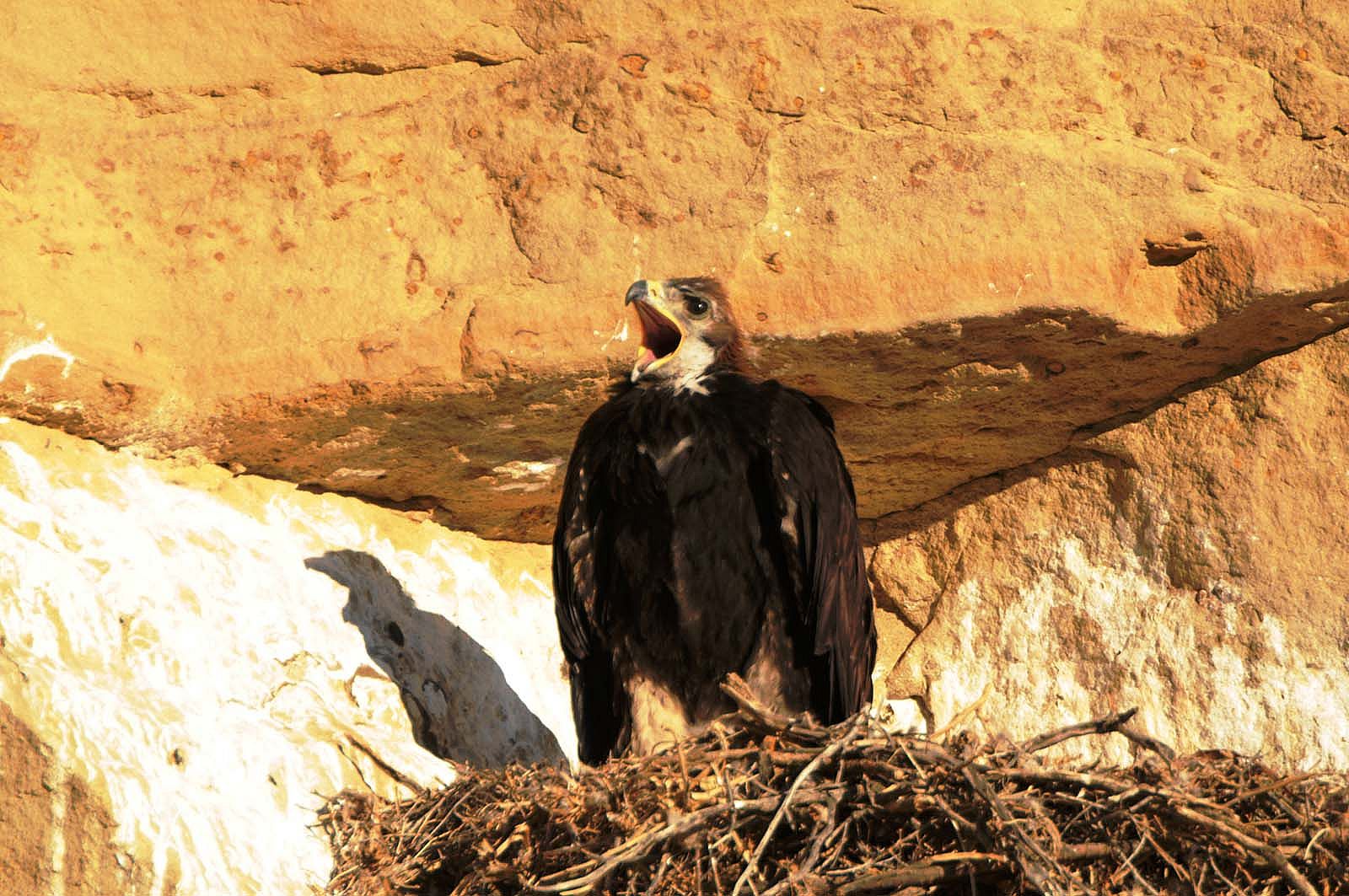
A golden eagle may weigh up to fourteen pounds and boast a wingspan of more than seven feet. Rabbits and rabbit-sized prey make up the bulk of their diet, but golden eagles are quite capable of killing prey as large as pronghorn and deer, especially when the eagles hunt in pairs. Because of its status atop the food web of most western ecosystems, the golden eagle plays a major role in ecosystem stability and is a good indicator of environmental change.
Despite the golden eagle’s substantial ecological and cultural value, however, there is little current information available regarding its status in response to the rapidly changing landscape of the American West. Some information indicates that the species may be declining, but efforts to document, monitor, and manage golden eagle populations in the western U.S. are generally scattered, uncoordinated, and lack unified goals. The species is federally protected under the Migratory Bird Treaty Act of 1918 (and subsequent amendments) and the Bald and Golden Eagle Protection Act of 1940 (and subsequent amendments). Recent changes in the U.S. Fish and Wildlife Service’s permits that allow “take” or disturbance of golden eagles will require sound knowledge of eagle population dynamics to assist officials in determining disturbance thresholds.
The posse rides again…and more
To help develop a coordinated approach to gathering this scientific information throughout the West, the U.S. Fish and Wildlife Service has organized a special Golden Eagle Science Meeting. The gathering will bring top raptor scientists from across the continent together to assess current information and outline a strategy to develop additional scientific information needed for long-term eagle management and conservation. Due to our ongoing golden eagle research/education project (see Points West, fall 2009) and the growing international reputation of the Draper Museum of Natural History as a center for science and public education about the Greater Yellowstone region, I have been invited to participate in this conference. This is an important step in ensuring that twenty-first century management of eagles and other wildlife is informed by the best available science.
Our fledgling golden eagle research and education project has progressed rapidly in 2010 thanks to additional financial support from the Bureau of Land Management, new financial support from the Wildlife Heritage Foundation of Wyoming, and the invaluable time, talents, and intellectual contributions of our Golden Eagle Posse of citizen-science volunteers. These folks have donated more than six hundred hours of their valuable time to the project thus far in 2010, and their field observations are critical to our study.
This year, I conducted a workshop for our volunteers to provide them with up-to-date natural history information on golden eagles as well as revised protocol and guidelines for monitoring nests without disturbing the birds. We also were able to add several important components to the program, including nighttime rabbit surveys to keep track of primary eagle/prey fluctuations; eagle capture and banding activities to assess physical condition and identify and monitor movements and survivorship of individual eagles; video monitoring to catalog eagle behaviors and support our various eagle educational and scientific presentations; and an expanded food habits study to better understand how eagles respond to changes in primary prey availability.
A National Geographic film crew captured some footage from our study to explore the possibility of a documentary tracking our work in the years to come. Additionally, we included a nesting golden eagle observation trip in our popular Draper Museum Field Expeditions Series for 2010 and presented a two-day Golden Eagle Youth Experience organized and co-led by staff from the Center’s Education Department for their Discovery Camp series. These interdepartmental collaborations are great for participants and staff!
The year so far
It’s too early to report complete details of our 2010 field results, but I can say that we have now discovered sixty-nine golden eagle nesting territories (separate areas where eagles have established nest sites) within our two-thousand square kilometer study area. By the end of the first year of our study in 2009, we had discovered only forty-two nesting territories. Although a smaller proportion of territories were occupied by nesting eagles in 2010 than in 2009, it appears that the percentage success (one or more eaglets surviving to leave the nest) and average productivity (number of eaglets per nest surviving to leave the nest) will be higher in 2010 than in 2009. Cottontails again were the primary prey identified in eagle nests, but the remains of pronghorn fawns, coyotes, ground squirrels, mice, snakes, ravens, and meadowlarks also showed up in nests. We found that rabbit populations are similar throughout our study area, though somewhat lower in the extreme western zone.
We had hoped to install remote video and still cameras at selected nest sites this year, but were unable to do so. Pending funding and additional permits, we plan to install these cameras next season and begin working with our cadre of research associates based in other institutions to extract and analyze DNA from shed eagle feathers in nests. With this technique, we can now determine if individual birds are related, identify the sex and genotype, and chart the composition and generational turnover in our study population in relation to landscape, weather, and human activities.
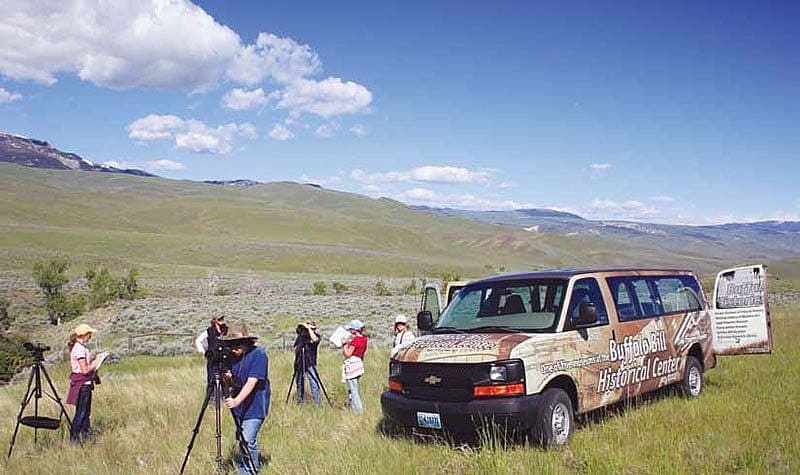
Eagles and students
One of the most exciting new aspects to our golden eagle program is the opportunity to position our field research as a platform to develop an ambitious, national K – 12 curriculum in ecology to help teachers and students meet math, science, and social studies standards in school districts throughout the nation. Preliminary screening makes us cautiously optimistic that the combination of such a charismatic animal—the golden eagle—together with the chance for students and teachers to become involved in authentic, ongoing scientific inquiry, will make this initiative compelling to both school districts and funding agencies, such as the National Science Foundation and U.S. Department of Education. This is also another important opportunity for cross-departmental collaboration within the Buffalo Bill Historical Center that teams our natural sciences staff with interpretive education staff and others.
Golden eagle research/education is only one of the many Greater Yellowstone projects the Center’s Draper Museum of Natural History is actively pursuing as we work to advance the spirit of the American West and assume a mantle of leadership, innovation, and excellence in exploring and documenting Greater Yellowstone wildlife and landscapes, illuminating relationships between humans and nature, and communicating the process and product of science to the general public.
About the author
A prolific writer and speaker, Dr. Charles R. Preston serves as Senior Curator of the Buffalo Bill Center of the West and Founding Curator in charge of its Draper Natural History Museum. He is an ecologist and conservation biologist who explores the influence of climate, landscape, and human attitudes and activities on wildlife, and is widely recognized as a leading authority on wildlife and human-wildlife relationships in the Greater Yellowstone region. He formerly served as Chairman of the Department of Zoology at the Denver Museum of Natural History, and before that, Associate Professor of Biological Sciences at the University of Arkansas at Little Rock.
For further reading, Preston suggests these vintage National Geographic Magazine photographic essays by members of the renowned Craighead family:
Craighead, J., and F. Craighead. 1940. In quest of the Golden Eagle. National Geographic Magazine 78 (5): 692 – 710.
Craighead, J., C. Craighead, and D. Craighead. 1967. Sharing the lives of wild Golden Eagles. Geographic Magazine 132 (3): 420 – 439.
Preston has also co-authored a book about the golden eagle, which is available in the Center’s Museum Store: Preston, C.R. and G. Leppart. 2004. Golden Eagle: Sovereign of the Skies. Portland, OR: Graphic Arts Center Publishing Company.
Post 033
Written By
Nancy McClure
Nancy now does Grants & Foundations Relations for the Center of the West's Development Department, but was formerly the Content Producer for the Center's Public Relations Department, where her work included writing and updating website content, publicizing events, copy editing, working with images, and producing the e-newsletter Western Wire. Her current job is seeking and applying for funding from government grants and private foundations. In her spare time, Nancy enjoys photography, reading, flower gardening, and playing the flute.
